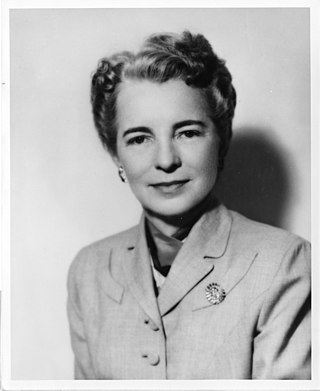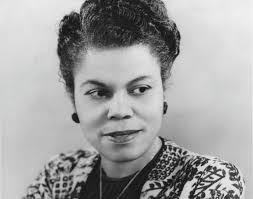
Elizabeth Ann Bayley Seton was a Catholic religious sister in the United States and an educator, known as a founder of the country's parochial school system. Born in New York and reared as an Episcopalian, she married and had five children with her husband William Seton. Two years after his death, she converted to Catholicism in 1805.

Jane Arminda Delano was a nurse and founder of the American Red Cross Nursing Service.

The Company of the Daughters of Charity of Saint Vincent de Paul, commonly called the Daughters of Charity or Sisters of Charity of Saint Vincent De Paul, is a Society of Apostolic Life for women within the Catholic Church. Its members make annual vows throughout their life, which leaves them always free to leave, without the need of ecclesiastical permission. They were founded in 1633 by Vincent de Paul and state that they are devoted to serving the poor through the corporal and spiritual works of mercy.
Nursing credentials and certifications are the various credentials and certifications that a person must have to practice nursing legally. Nurses' postnominal letters reflect their credentials—that is, their achievements in nursing education, licensure, certification, and fellowship. The letters usually appear in the following order:

Dame Alicia Frances Jane Lloyd Still, was a British nurse, teacher, hospital matron and leader of her profession. She was one of the leaders in the campaign for state registration of nurses. Following the Nurses Registration Act 1919, she was a member of the General Nursing Council (1920-1937). As chairwoman of the General Nursing Council's first Education and Examinations Committee she helped establish the first national examination standards for the registration of nurses.
Mary Elizabeth Carnegie was an educator and author in the field of nursing. Known for breaking down racial barriers, she was the first black nurse to serve as a voting member on the board of a state nursing association. She was later president of the American Academy of Nursing and edited the journal Nursing Research.
The Uniform Advantage/AACN Graduate Nursing Student Academy Scholarship is an award that acknowledges the important role nurses play in the health care system. It was developed based on a commitment to improving access to nursing students enrolled in master's and doctoral programs.
The American Association of Colleges of Nursing (AACN) is a national organization of nurses in the United States that is dedicated to advancing nursing education. It was established in 1969, and represents more than 875 member schools of nursing at public and private universities nationwide.

Lucile Petry Leone was an American nurse who was the founding director of the Cadet Nurse Corps in 1943. Because the Nurse Corps met its recruiting quotas, it was not necessary for the US to draft nurses in World War II. She was the first woman and the first nurse to be appointed as Assistant Surgeon General of the United States Public Health Service.
The Hunter-Bellevue School of Nursing (HBSON) is the nursing school of Hunter College, a public university that is a constituent organization of the City University of New York (CUNY). It is located on the Brookdale Campus, at East 25th Street and 1st Avenue in Kips Bay, near Bellevue Hospital. The school is the flagship nursing program for CUNY.

Sadie Heath Cabaniss was a pioneer for nursing in Virginia and developed the first training school for nurses that followed the Nightingale plan. Her training school lives on to this day and is now the School of Nursing at Virginia Commonwealth University. In addition, Cabaniss was the founder of the Charter Member and First President of the Virginia State Association of Nurses. Finally, she was the President and original member of the Virginia State Board of Examiners of Nurse Founder of the Nurses Settlement, forerunner of the Instructive Visiting Nurses Association. Sadie Health Cabaniss was inducted into the American Nurses Association Hall of Fame on July 1, 2002, at the ANA Convention in Philadelphia, Pennsylvania.

Estelle Massey Riddle Osborne was an African American nurse and educator. She served in many prominent positions and worked to eliminate racial discrimination in the nursing field.
Pamela R. Jeffries is an American professor of nursing and serves as dean of Vanderbilt University School of Nursing. She is nationally recognized as an expert in nursing, with a focus on simulation and education.

Carolyn Ladd Widmer was an American nurse educator and academic administrator who served as the first dean of the University of Connecticut School of Nursing. She held this position for twenty-five years (1942–1967).
Katharine Jane Densford (1890–1978) was an American nurse who made important contributions to nursing education and to nursing services during World War II. Densford was Director of the University of Minnesota School of Nursing, serving in that position from 1930 to 1959. Densford’s leadership of Minnesota’s flagship school of nursing, located in the Minneapolis-Saint Paul area provided the model for nursing education throughout the state and nation. Her pragmatic leadership during World War II made a significant contribution to the United States war effort.
Bernadette J. Mazurek Melnyk is an American nurse. She is a professor of pediatrics and psychiatry at Ohio State University College of Medicine and dean of the College of Nursing. Melnyk is also the editor in chief of the journal Worldviews on Evidence Based Nursing.
Flora Madeline Shaw was a Canadian nurse and nursing teacher. She began her career as second and later first assistant to the Montreal General Hospital Training School for Nurses's superintendent before becoming matron of the Presbyterian Hospital in New York City. Shaw was the first Director of the McGill School for Graduate Nurses in Montreal; she was president of each of the Canadian Association of Nursing Education, the Association of Registered Nurses of the Province of Quebec and the Canadian Nurses Association. A memorial fund scholarship, a memorial tablet and the Chair of Nursing at McGill University were all dedicated to her.

Lucy Lincoln Drown was an American nursing educator. She was the superintendent of nurses at the Boston City Hospital from 1885 to 1910, which “made her a national figure in nursing”. She was one of the pioneers in nursing education in the US.
Dorothy E. Reilly was an American nurse who was “one of leading nursing educators at the time”. She played an instrumental role in the development of nursing education in the United States and Canada. She was involved in developing the nursing curriculum and preparation of nursing teachers. In 1998, she was inducted into American Nurses Association Hall of Fame.











